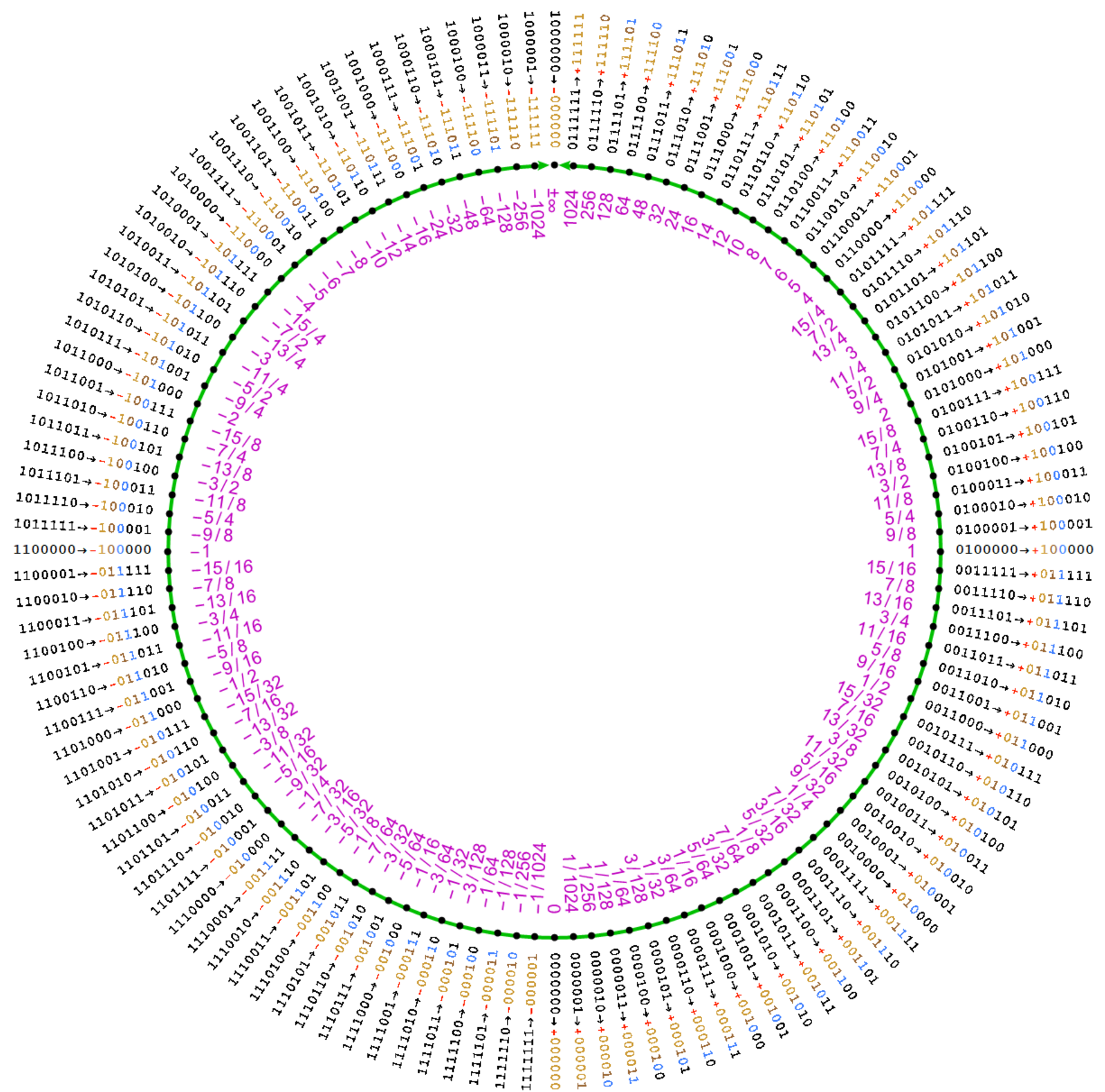Posit Refinement Visualization¶
Universal numbers, unums for short, are for expressing real numbers, and ranges of real numbers. There are two modes of operation, selectable by the programmer, posit mode, and valid mode.
In posit mode, a unum behaves much like a floating-point number of fixed size, rounding to the nearest expressible value if the result of a calculation is not expressible exactly. A posit offers more accuracy and a larger dynamic range than floats with the same number of bits.
In valid mode, a unum represents a range of real numbers and can be used to rigorously bound answers much like interval arithmetic does.
The positive regime for a posit shows a very specific structure, as can be seen in the image blow:
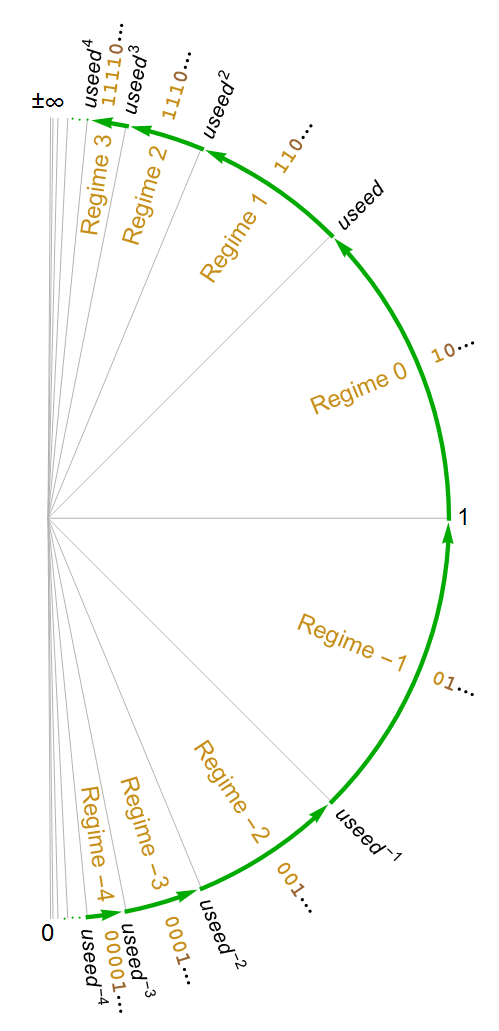
Posit configurations have a very specific relationship to one another. When expanding a posit, the new value falls ‘between’ the old values of the smaller posit. The new value is the arithmetic mean of the two numbers if the expanding bit is a fraction bit, and it is the geometric mean of the two numbers if the expanding bit is a regime or exponent bit. Here is the starting progression from posit<2,0> to posit<7,1>:
The seed posit:
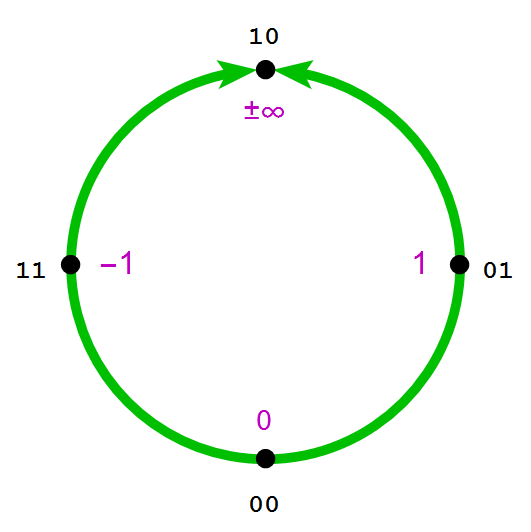
posit<3,0>:
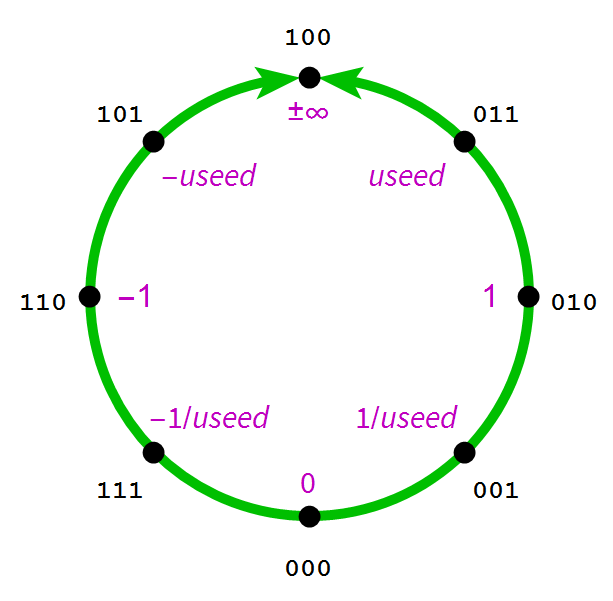
posit<4,1>:
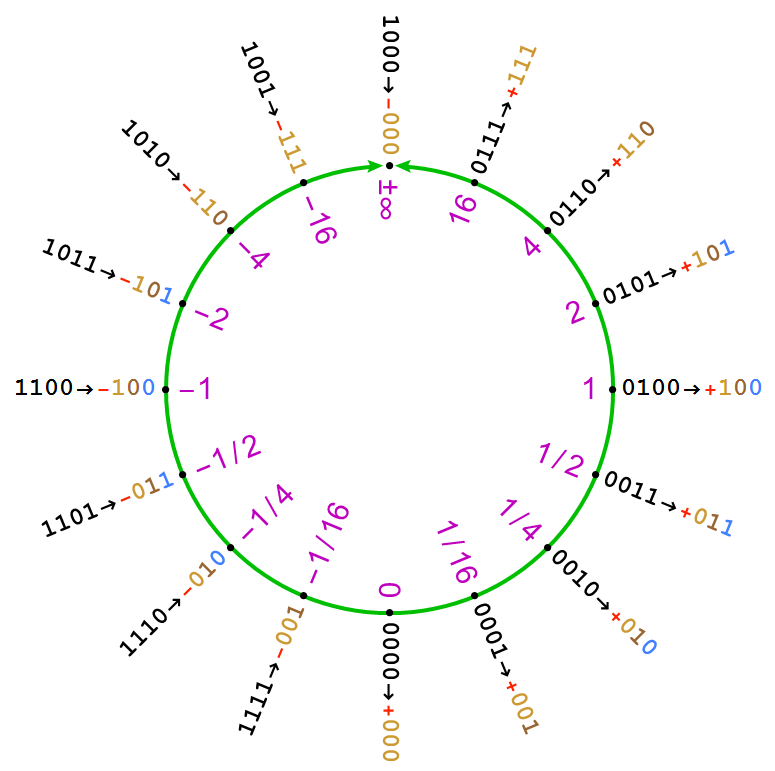
posit<5,1>:
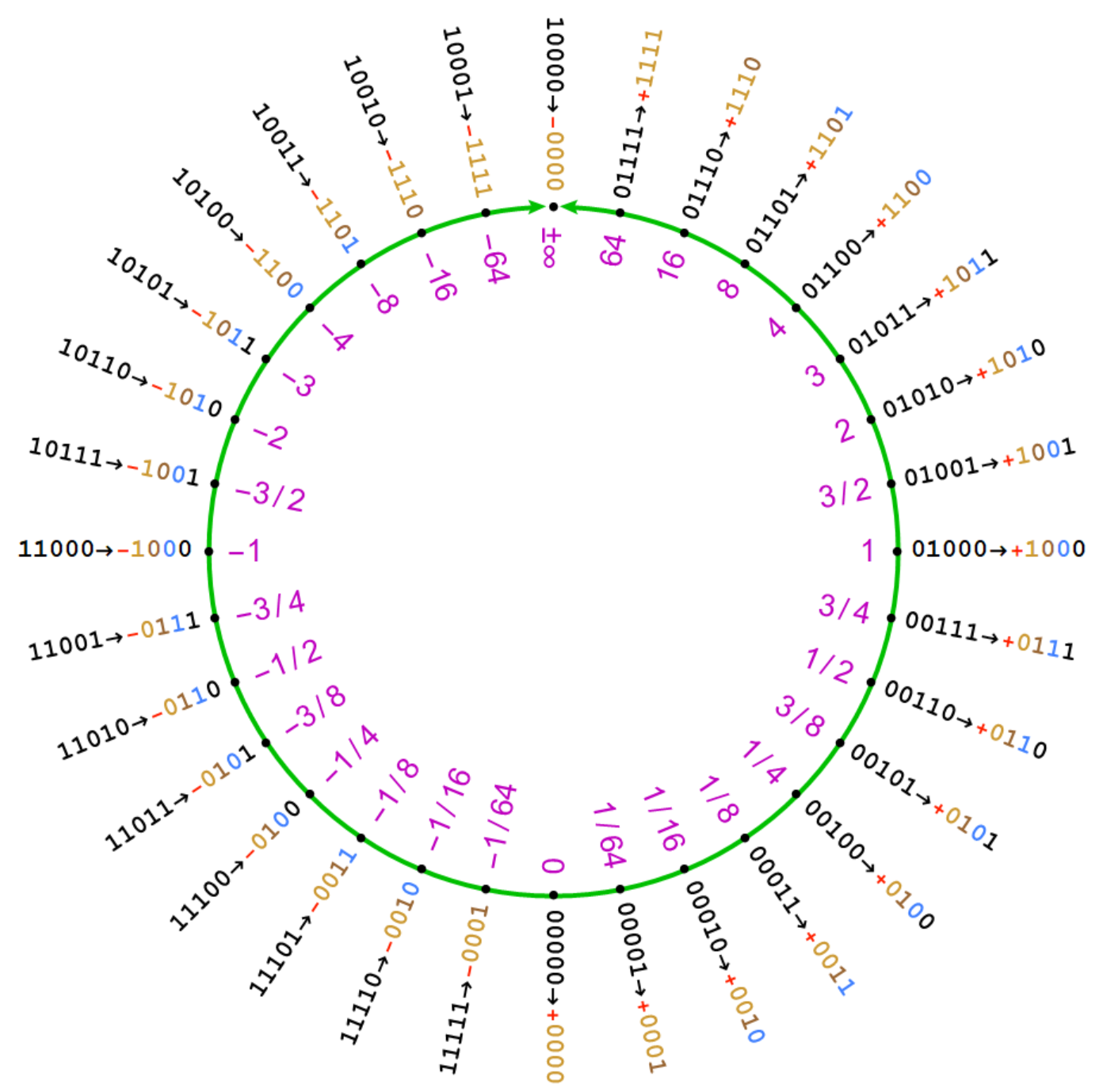
posit<6,1>:
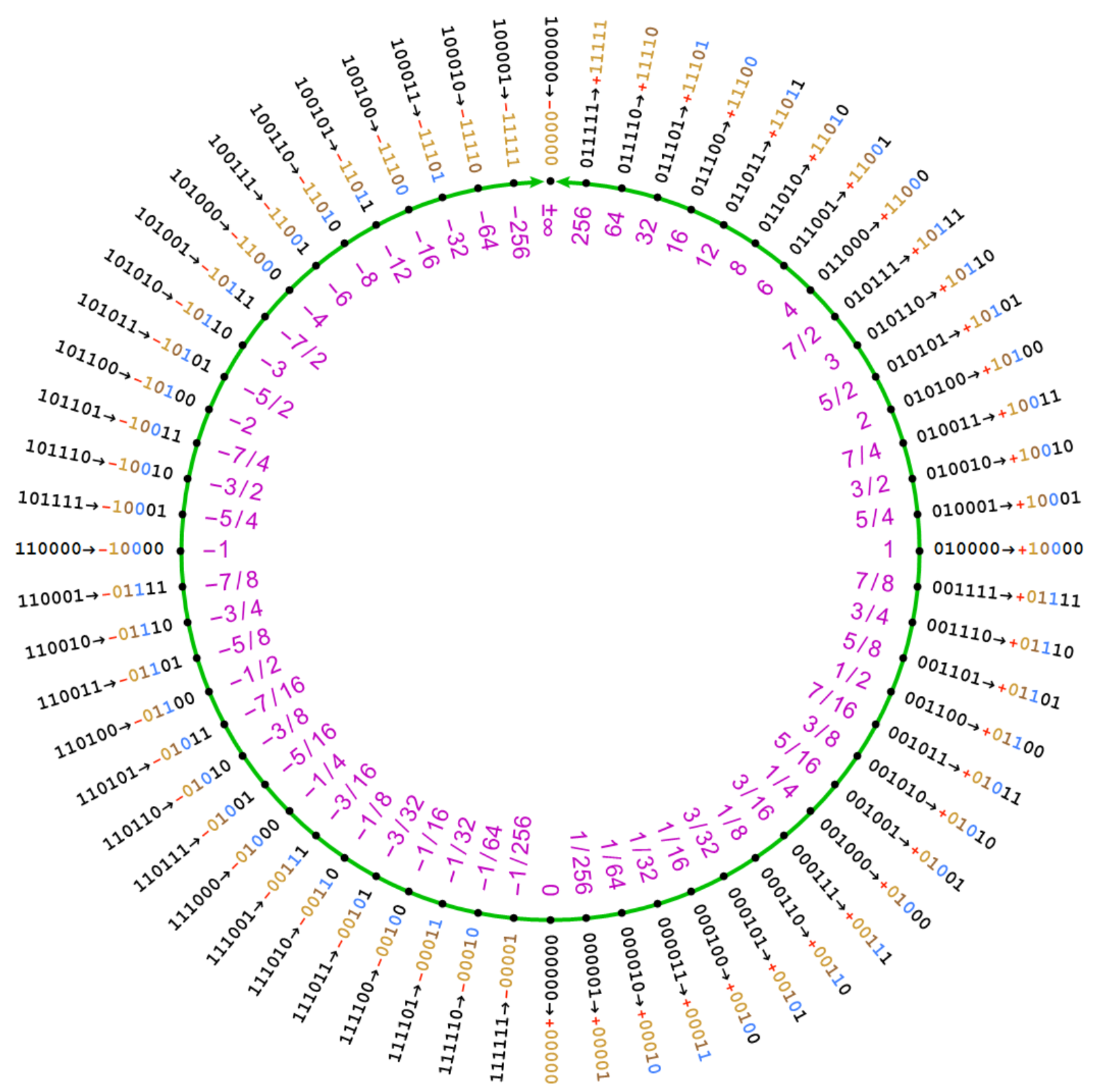
posit<7,1>:
